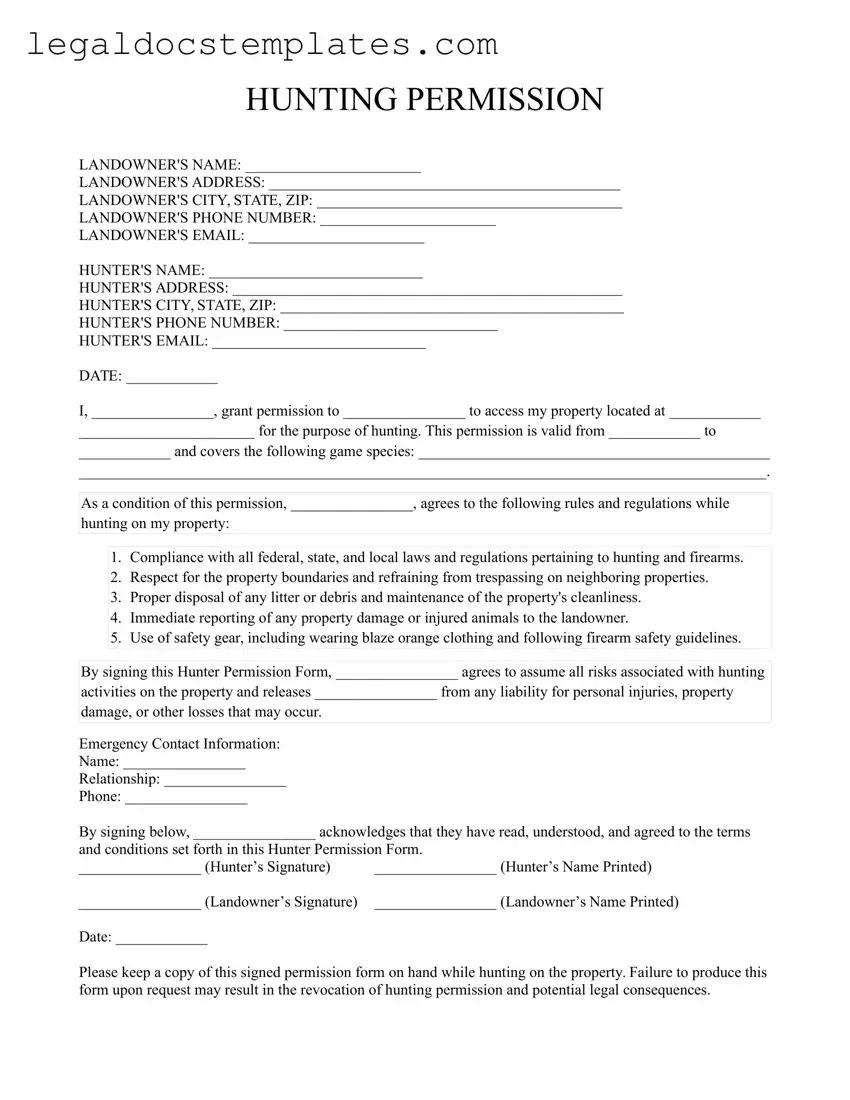HUNTING PERMISSION
LANDOWNER'S NAME: _______________________
LANDOWNER'S ADDRESS: ______________________________________________
LANDOWNER'S CITY, STATE, ZIP: ________________________________________
LANDOWNER'S PHONE NUMBER: _______________________
LANDOWNER'S EMAIL: _______________________
HUNTER'S NAME: ____________________________
HUNTER'S ADDRESS: ___________________________________________________
HUNTER'S CITY, STATE, ZIP: _____________________________________________
HUNTER'S PHONE NUMBER: ____________________________
HUNTER'S EMAIL: ____________________________
DATE: ____________
I, ________________, grant permission to ________________ to access my property located at ____________
_______________________ for the purpose of hunting. This permission is valid from ____________ to
____________ and covers the following game species: ______________________________________________
__________________________________________________________________________________________.
As a condition of this permission, ________________, agrees to the following rules and regulations while
hunting on my property:
1.Compliance with all federal, state, and local laws and regulations pertaining to hunting and firearms.
2.Respect for the property boundaries and refraining from trespassing on neighboring properties.
3.Proper disposal of any litter or debris and maintenance of the property's cleanliness.
4.Immediate reporting of any property damage or injured animals to the landowner.
5.Use of safety gear, including wearing blaze orange clothing and following firearm safety guidelines.
By signing this Hunter Permission Form, ________________ agrees to assume all risks associated with hunting
activities on the property and releases ________________ from any liability for personal injuries, property
damage, or other losses that may occur.
Emergency Contact Information:
Name: ________________
Relationship: ________________
Phone: ________________
By signing below, ________________ acknowledges that they have read, understood, and agreed to the terms
and conditions set forth in this Hunter Permission Form.
________________ (Hunter’s Signature) |
________________ (Hunter’s Name Printed) |
________________ (Landowner’s Signature) |
________________ (Landowner’s Name Printed) |
Date: ____________ |
|
Please keep a copy of this signed permission form on hand while hunting on the property. Failure to produce this form upon request may result in the revocation of hunting permission and potential legal consequences.

